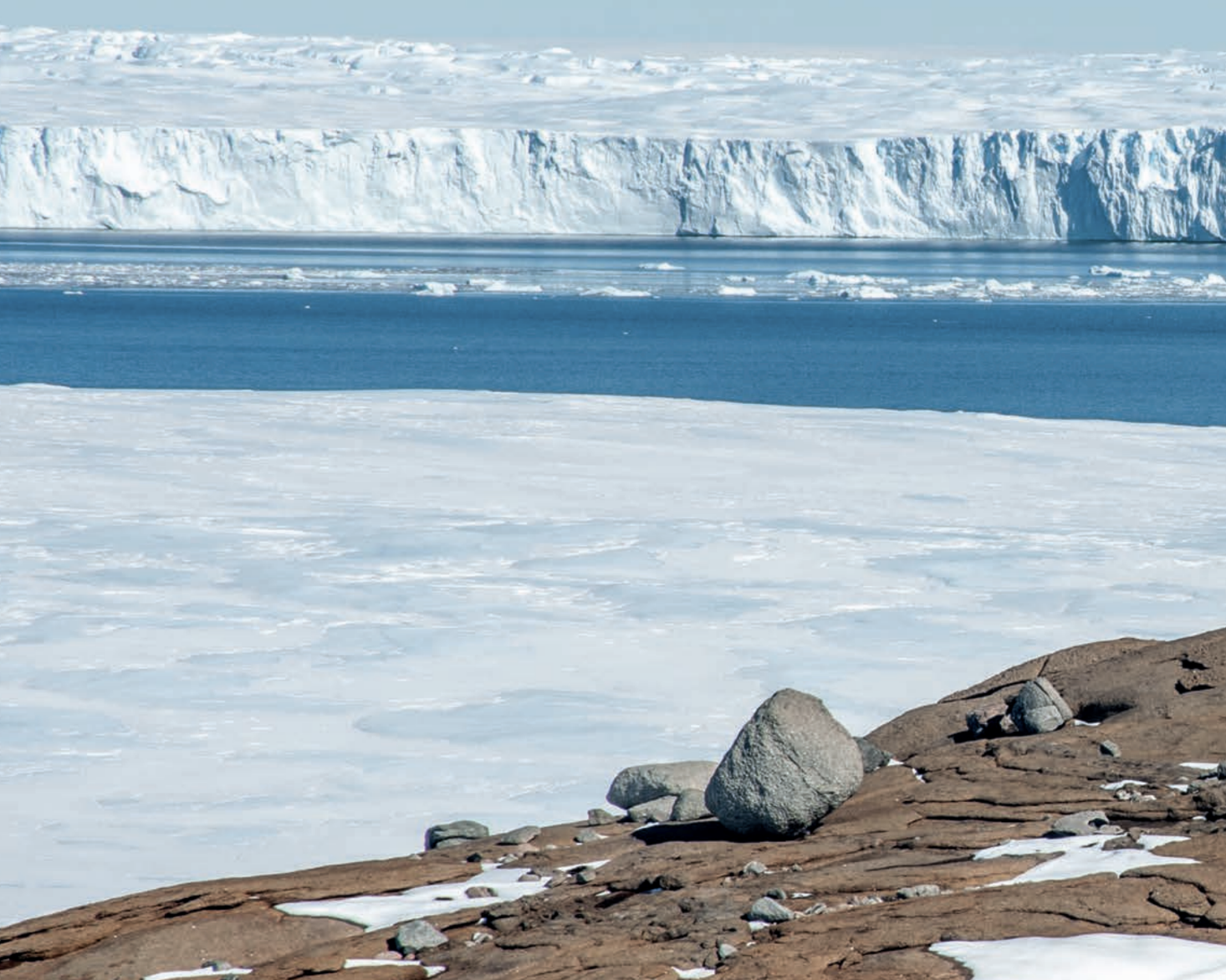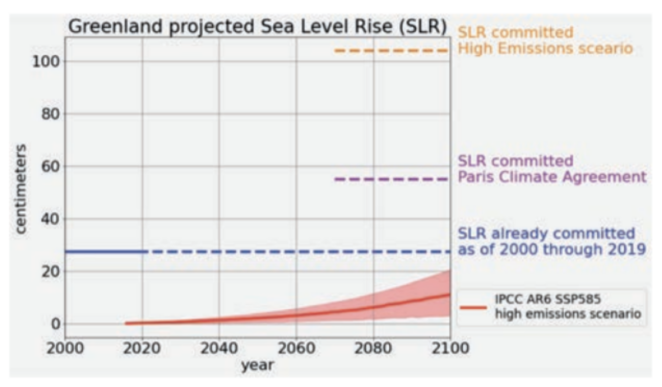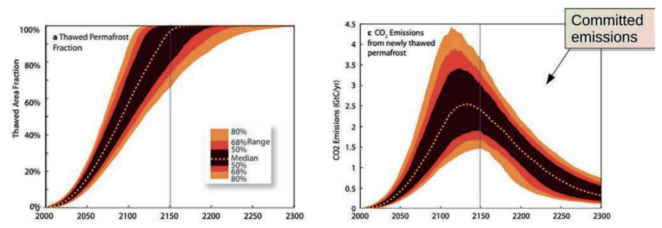State of the Cryosphere Report 2022

Introduction
Far too much human suffering occurred in 2022 due to rapid loss of ice in the cryosphere (the Earth’s snow and ice regions) from human-caused global warming. Most occurred in places far from ice and snow: coastal sea-level rise from ice sheet loss; water shortages well downstream from shrinking glaciers and snowpack; floods, avalanches, wildfires and extreme weather events. All were caused in whole or in part by loss of the cryosphere’s stabilizing influence on the global climate system. Our global ice stores are receding at rates unthinkable just a decade ago, whether held in ice sheets, land glaciers, permafrost or sea ice.
Reviewed and supported by over 60 leading cryosphere scientists, the Report details how a combination of melting polar ice sheets, vanishing glaciers, and thawing permafrost will have rapid, irreversible, and disastrous effects on the Earth’s population. The 2022 Report, Growing Losses, Global Impacts, updates the latest cryosphere science, and emphasizes that the global impacts of these changes are spreading and worsening.
The report is structured as follows:
- Chapter 1: Emissions pathways and cryosphere (p.2-6)
- Chapter 2: Ice sheets and sea-level rise (p.7-15)
- Chapter 3: Mountain glaciers and snow (p.16-24)
- Chapter 4: Permafrost (p.25-33)
- Chapter 5: Arctic sea ice (p.34-39)
- Chapter 6: Polar ocean acidification, warming and freshening (p.40-46)
- Summary projections (p.47-50)
This article is an abridged version of the original text, which can be downloaded from the right-hand column. Please access the original text for more detail, research purposes, full references, or to quote text.
Key Messages
- Only “very low” and “low” emissions can feasibly prevent essentially-permanent loss and damage
- The two lowest emissions pathways or scenarios are the only ones with any possibility of preventing the essentially permanent (on human timescales) impacts outlined in this report, due to cryosphere processes that cannot be reversed in anything less than centuries, to tens of thousands of years.
- Both of these lowest emissions pathways remain physically, technologically, and economically feasible and even advantageous to both human populations and ecosystems, especially because many of their elements greatly improve human health outcomes.
- Both involve a steep decline in CO2 emissions to 50% of 2010 emissions levels within the next eight years, by 2030.
- With adequate action that follows the science, humanity can still prevent the worst impacts; but with each passing year of continued high emissions and associated rise in CO2 in the atmosphere, the window of prevention is closing.
- Loss of some coastlines is now inevitable – but “very low” emissions can save many more
- Improved understanding of physical ice sheet processes shows that ice sheet melt from both Greenland and Antarctica may result in greater and/or more rapid sea-level rise than previously estimated.
- Once ice sheet melt accelerates due to higher temperatures, it cannot be stopped or reversed for many thousands of years, even once temperatures stabilize or even decrease with so-called net-zero emissions and/or carbon dioxide removal (CDR).
- The rate of future sea-level rise, and associated risks to security and development, now largely depends on human decisions on future emissions of greenhouse gases. To maintain the possibility of staying below 1.5°C, CO2 emissions must be at least halved by 2030, and reduced to zero by mid-century.

- Future loss and damage of mountain glaciers and snow can be slowed and avoided only with sharp emissions reductions today
- Glacier losses will continue at a steep rate over the next several decades just due to current warming, with smaller glaciers disappearing completely and others decreasing to only 10–20% of their previous size.
- With “very low” emissions however, these losses will slow and eventually stabilize, with at least some glacier remnants surviving.
- “Low” emissions also allow local communities more time to adapt, even in those equatorial and mid-latitude regions where smaller glaciers are doomed to disappear completely even at 1.5°C.
- To preserve as much glacier ice and ecosystem services as possible, a sharp strengthening of climate action is needed towards the 1.5°C limit. This requires a general 50% reduction in human emissions by 2030, and stronger commitments in the near-term 2030–2040 timeframe.
- Higher human emissions today mean higher permafrost emissions for centuries
- Once triggered, emissions from permafrost thaw processes are most often permanent on human timescales, because re-building of new permafrost soils takes centuries to thousands of years.
- The only means available to minimize these growing risks is to keep as much permafrost as possible in its current frozen state, holding global temperature increases to 1.5°C. This will greatly decrease the amount of additional carbon entering the atmosphere from permafrost thaw for the next one-two centuries, and thereby minimize the long-term burden of negative emissions laid on future generations.

- Arctic sea ice – crossing this threshold is now inevitable
- With the determination by the IPCC that at least one ice-free summer is now inevitable due to human CO2 emissions, the first cryosphere “threshold” of collapse has essentially been breached.
- Only under both “very low” and “low” emissions scenarios would summer sea ice extent likely stabilize.
- This collapse will worsen rapidly unless emissions are curtailed to keep temperatures close to 1.5°C. With greater ocean warming from a 3.1°C peak, recovery of Arctic sea ice will take centuries.
- “Very low” emissions – the only means to save many polar species and ecosystems
- Mounting research indicates that that a high emissions scenario would lead to catastrophic polar marine species loss already by 2300.
- Warming and acidifying oceans reduce habitat options for many marine species, including Pacific salmon, Arctic-native whale species and mussels.
- Exposure to new stressors such as nanoplastics could worsen the effects of acidification for polar marine species.
- Both polar oceans already appear to be nearing a critical ocean acidification chemical threshold. There is high likelihood that these changes are a harbinger of much worse to come; until, and unless, human-caused CO2 levels begin to fall sharply.

Suggested Citation:
ICCI, 2022. State of the Cryosphere 2022 – Growing Losses, Global Impacts. International Cryosphere Climate Initiative (ICCI), Stockholm, Sweden. 60 pp.
Related resources
- Mountain observations: Monitoring, data, and information for science, policy, and society
- IPCC WGII Sixth Assessment Report Cross-Chapter Paper 5: Mountains
- IPCC Special Report on Ocean and Cryosphere - High Mountain Areas
- The IPCC’s Special Report on the Ocean and Cryosphere in a Changing Climate: What’s in it for Africa?
- The IPCC’s Special Report on the Ocean and Cryosphere in a Changing Climate: What’s in it for Latin America?
- The IPCC’s Special Report on the Ocean and Cryosphere in a Changing Climate: What’s in it for South Asia?
- Assessment of Glacier and Permafrost Hazards in Mountain Regions: Technical Guidance Document
(0) Comments
There is no content